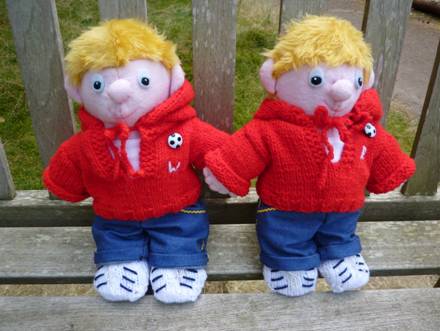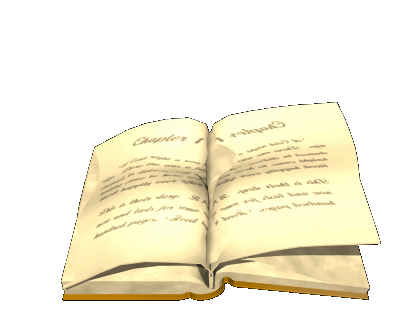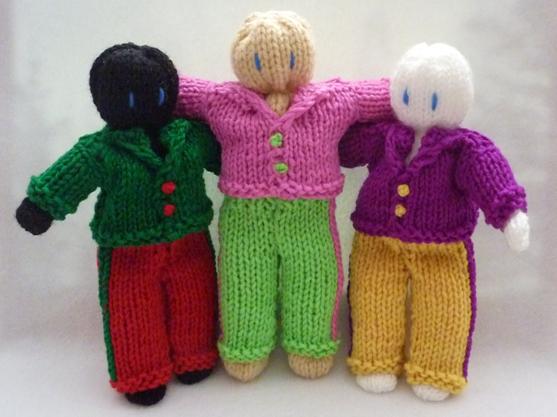
Salty Sam’s Fun Blog for Children
Number 378
Puritans
Hello Everyone

At the back of Rocky Bay, stands the tall and imposing parish church; behind that are to be found the vicarage and the Rocky Bay Community Orchard.
The predominant Christian religion in England is the Anglican faith; or the Church of England.
There are also Catholic churches and many others too, like Baptist churches and Methodist churches.
ln modern times, of course, there are very many other kinds of religious buildings as well, like, for example, Jewish synagogues, Hindu Temples and lslamic mosques.
The first ever Christian church was the Catholic Church and it was the only church to exist in Europe throughout the whole of the Mediaeval Era.
But a number of Christians eventually started to question the behaviour of the Catholic Church – or rather the people that ran it and believed they needed to form their own churches and they would be run in a different way.
These Protestants were a diverse group of people and different groups that had different ideas about how church hierarchies and worship should be structured.
They strongly believed that people should be able to read the Bible for themselves; it should not be just an activity for priests.
Protestant numbers rose from the 16th century onwards and in 1534 Henry Vlll declared himself the Head of the English Church and broke its associations with the Pope in Rome.
The word ‘Puritan’ referred to the members of this new movement. They had a wish for more purity in worship and they wanted to live a simple life with a strong focus on God.
‘Puritans’ was a name given to them rather than their own invention.
These Puritans believed in people taking responsibility for their own lives, answering to God directly and not dealing with God through a priest.
Very importantly, their bibles were printed in English so that people could read them for themselves, and services were conducted in English so they could be understood by all in a community. Latin was the language of the Catholic Church.
They had very precise rules about behaviour regarding working, singing, dancing, and what could and couldn’t be done on a Sunday.
They wore dark-coloured clothing, not colourful or flamboyant at all.
The word puritanical when used today often has a meaning of being a killjoy – someone who is strict, unbending and doesn’t like people having fun.
Education was important to Puritans and so many of them could read.
Money earned would be reinvested into businesses. This is now called the ‘Protestant Ethic’. This habit made businesses successful.
ln England, the Protestant, Oliver Cromwell and his army rose against the idea of the ‘Divine Right of Kings’ – that is to say that the monarch had a God-given right to govern over all his or her subjects and make decisions about their lives.
This uprising happened because the people wanted to have the right to self govern. The civil war that followed was eventually won by Cromwell’s army.
The king, Charles l, was executed by being beheaded and a parliament was set up by Cromwell. There is now a statue of Cromwell outside the Palace of Westminster (The British Parliament).
We have been ruled by laws made in Parliament ever since; even though a monarch was eventually brought back to the throne in 1660.
(A civil war is one fought by two groups of people within a country – not by two countries against each other.)
During the time of Cromwell’s Commonwealth, (1649-1660) a very strict way of living was introduced by the people who ruled. (Potatoes could not be grown in people’s gardens, for example, because they were not mentioned in the Bible!)
Meanwhile, in America, the new colony of Puritans was swelling in number, and new towns were being built.
The Pilgrims who formed the first settlements in the New World followed the teachings of John Calvin. These teachings differed from that of the State Church of England and the people who wanted to set up a separated society wanted to be self-governing so that they could follow Calvinist teachings with no deviations or interference.
This group of Calvinists had first tried to start a new life in Holland but the jobs they had managed to get as immigrants had not been the best.
When war in Europe seemed to be brewing – what we now call the Thirty Year War, they knew it was time for them to leave.
They decided to start a new life in the New World. They went to America.
(The Old World was Europe.)
The first settlers went across the Atlantic Ocean on a ship called the Mayflower. Conditions were cramped and uncomfortable.
The ship should have left England in very early spring so that the settlers would have had time to build houses before the winter set in, but they didn’t. They left in early autumn and consequently faced many winter storms at sea.
The Mayflower battled its way across the ocean against strong westerly winds and the Gulf Stream (a current of water coming up from the Gulf of Mexico). lt took the ship sixty-five days to reach land – and often only made progress at two miles an hour!
There were 102 passengers and at least 30 of those were children.
Many of the pilgrims were ill; mainly due to bad living conditions and lack of good nourishment. ln the first winter, their number were decimated (greatly reduced).
Life could be hard in the New World, but the pilgrims were very determined to establish themselves.
The new colony set up in New England had John Carver as its first governor.
By the autumn, the pilgrims had built seven small houses and four community buildings from local timber. Their governor was now William Bradford; a man from Yorkshire, he was to remain so for the next thirty-one years. He kept a journal which now tells us about life in the village at Cape Cod.
lt was a text full of observations he had during the setting up of the Plymouth Colony over a 20 year period.
The pilgrims made friends with the local population of lndians after they had landed in the New World. Luckily, one of them could speak English! They landed two hundred miles away from where they had hoped to land – but where they did land they found an lndian who spoke English.
A happy accident, do you think?
His name was Tisquantum (or Squanto). He was from the Wampanoag Confederacy. His help was extremely helpful to the English newcomers.
The lndians wanted to sign a treaty with the pilgrims.
Their numbers had been depleted by an epidemic of illness (caught from European traders) four years earlier and they wanted a promise of help from the Newcomers should they ever be attacked by another tribe.
They were enormously helpful to the settlers.
They showed the pilgrims how to fish, hunt beaver and plant corn and a successful harvest was brought into store to keep the new colony fed throughout that next winter in 1621.
The Newcomers then shared the corn with the lndians who had helped them.
Life was challenging for the settlers.
Winters in America were much harsher than English ones. Many things needed for everyday use were not plentiful. Everything needed had to be made from what was available locally or imported on ships.
Not a thing was wasted; every tool was cared for, every scrap of fabric was used in some way.
Patchwork covers for beds were constructed from any odd shape of material left over from making clothing or furnishings. The women made rag dolls from the material left over from making their long, black skirts and they used the white buttons they used to fasten up their blouses as eyes for these toys.
As the colonists spread westwards across New England and beyond over the years, the churches split into factions.
Different groups wanted their own communities with their own rules.
And in the USA today, there are even more branches of the Protestant religion. There are very many of them.
The festival of Thanksgiving to mark that first successful corn harvest is now celebrated by Americans, wherever they are in the world, on the last Thursday of November.
lf you like my blog, please support it by telling all your friends and followers about it.
Thank you!
And see you again next Fun Friday!
Love and kisses
Salty Sam

www.christina-sinclair.com


Bill and Bob’s Joke of the Week![]()
![]()
Bob: Did you hear about the idiot who wants to cross the English Channel on a plank?
Bill: No?
Bob: He says he will do it – just as soon as he finds one long enough!

Salty Sam © Christina Sinclair 2015
Unauthorized use and/or duplication of material from this blog without express and written permission from this blog’s author and owner is strictly prohibited.
Links may be used to www.christina-sinclair.com

Picture Gallery

 Salem Pioneer Village in New England
Salem Pioneer Village in New England
The settlers built houses in the same way they would have done
when they were living in England



 THE SALTY SAM NEWS DESK
THE SALTY SAM NEWS DESK

This week, Miss Pringle told her class about something called the ‘Protestant Ethic’.
Basically, it means working hard and taking the money you earn to grow yourself and your business.
You reinvest what you have earned, rather than wasting it on things that you don’t really need or even want that much.
Investing in yourself could mean getting more education or improving your health by taking fun exercise.
Some people take more care of their car than their own body!
Luckily when you are a child, you don’t have to pay for your education.
Isn’t that lucky!
You also don’t have to pay to borrow books from a library.
Isn’t that lucky!
You don’t have to pay to take exercise in a park on on a sports pitch.
Isn’t that lucky!
Investing in your business means: making it run more efficiently, training your staff to do a better job and spending money to make your business get bigger.
Investing in yourself helps you to be more successful.
The Puritans who set up businesses were very successful because they used this way of thinking.
The Puritans put great store in accomplishment. That means being good at your work.
The way you can be successful at anything is to learn and then learn some more.

You have to focus on what you are doing and apply yourself.
You have to plan well.
You have to practise doing a skill over and over.
You have to have courage to go forward.
You have to have persistence in achieving your goals – and sometimes that means not giving up when things get difficult.
Sometimes you can be on a path and things can be very difficult and you think it must be the wrong path because of that, when actually it isn’t, sometimes the right path can be a very difficult path to tread.
You must always try to do your best.
Bill and Bob listened very carefully to the lesson and kept thinking about it when they went home.
More about their thoughts next week…


*********************
TO ADVERTISE ON THIS BLOG
PLEASE CONTACT:
christina.sinclair.ads@aol.co.uk
*********************

 Quick Quiz
Quick Quiz
Can you name these people in the church?
- _ r _ e _ t
- V _ c _ r
- _ e _ t _ r
- V _ r _ e _
- _ I _ h _ p
- M _ n _
- _ u _




lt’s the Weekend!

HOW TO MAKE THREE LlTTLE KNlTTED DOLL FRlENDS
These little dolls have very colourful clothes.
They stand about 20cm tall.

BODY (KNIT TWO)
Using 4mm knitting needles and dk yarn cast on 14 stitches
Knit 34 rows in stocking stitch
Don’t cast off
Leave your stitches on a length of yarn about 10cm long
ARMS (KNIT TWO)
Using 4mm knitting needles and dk yarn cast on 10 stitches
Knit 18 rows in stocking stitch
Don’t cast off
Leave your stitches on a length of yarn about 10cm long
LEGS (KNIT TWO)
Using 4mm knitting needles and dk yarn cast on 14 stitches
Knit 24 rows in stocking stitch
Don’t cast off
Leave your stitches on a length of yarn about 10cm long
TO MAKE UP
- Sew up the side seams of the body and head right sides together using over-sew stitching
- Turn the body and head the right way out
- Sew along the inner leg seams using over-sew stitching right sides together and turn the legs the right way out
- Tightly bind the ankles twice around with the skin-coloured yarn
- Stuff the legs
- Sew across the top of the legs and the bottom of the body from behind (lay the legs across the stomach as you work) to attach the legs
- Sew along the under arm seams using over-sew stitching right sides together and turn the arms the right way out
- Tightly bind the wrists twice around with the skin-coloured yarn
- Stuff the arms with a little stuffing
- Sew the arms securely to the sides of the body so that they point forward
- Stuff the head and body and pull the top of the head shut – secure the yarn
- Sew a strand of the skin -coloured yarn into the back of the neck and wrap it around the neck a couple of times, pull tight and secure the yarn into the centre back of the neck once more
- Embroider the eyes onto the front of the head using blue yarn
TIP
As with all toy making, when you stuff the body, put the stuffing into it in tiny amounts so that you can get the body shape to be exactly as you want it to be.
Now you are ready to make your dolls some clothes.

TROUSERS (KNIT TWO)
Using 4mm knitting needles and dk yarn cast on 17 stitches
Knit 2 rows of garter stitch
Knit 16 rows in stocking stitch
Decrease 1 stitch at the beginning of the next 2 rows of stocking stitch
Knit 6 rows of stocking stitch
Change to 3¾mm knitting needles
Knit 4 rows of 1×1 rib
Cast off
TO MAKE UP
With right sides together using over-sew stitching
- Embroider a strip down the centre of each trouser piece using Swiss darning and a contrasting colour before sewing the pieces of the trousers together
- Sew up the front and back seam of the trousers on the part that will fit onto the body
- Sew along the inside leg seams with right sides together using over-sew stitching.
JACKET BACK (KNIT ONE)
Using 4mm knitting needles and dk yarn cast on 14 stitches
Knit 2 rows of garter stitch
Knit 14 rows in stocking stitch
Knit 2 rows of garter stitch
Cast off
JACKET BACK (KNIT TWO)
Using 4mm knitting needles and dk yarn cast on 10 stitches
Knit 2 rows of garter stitch
Knit 14 rows in stocking stitch
Knit 2 rows of garter stitch
Cast off
JACKET SLEEVES (KNIT TWO)
Using 4mm knitting needles and dk yarn cast on 12 stitches
Knit 2 rows of garter stitch
Knit 6 rows in stocking stitch
Cast off
TO MAKE UP
Focus on the details at the front of the jacket before you make up the garment.
- Sew the lapels back into place along the top
- Create 2 buttons on the overlap at the front by winding a contrasting yarn over a yarn needle 3 times
- With right sides together using over-sew stitching, sew up shoulder seams only 1cm in from the end to allow space for the head
- Sew the tops of the sleeves into place
- Sew up side seams and under arm seams

Please note that the material on this blog is for personal use and for use in classrooms only.
It is a copyright infringement and, therefore, illegal under international law to sell items made with these patterns.
Use of the toys and projects is at your own risk.
©Christina Sinclair Designs 2015


Quick Quiz Answers
- Priest
- Vicar
- Rector
- Verger
- Bishop
- Monk
- Nun


Embroidery Stitches




This blog is such good quality. Well-researched and well-written.
Thank you so much! lt is very kind of you to say so.
Love your style, love your website. I will be back soon.
Good! Thank you for your comment Karl. lt is much appreciated.